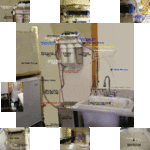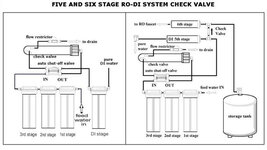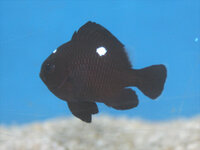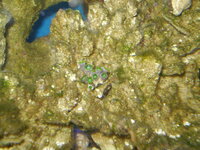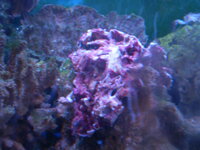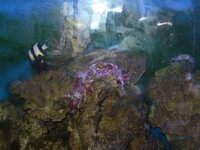Sedna,
It is fun second guessing what critters hlywkar is finding and hopefully will continue to be a thread other new marine keepers can use as a reference but I wish more people would contribute there

. There is a major advantage to being a layperson - I can be off base without losing face

I will disagree about not getting a DI unit though. I am not sure why your LFS recommends against it

as removing potential copper is
very desirable and there is no problem dissolving the salt (which will add back any minerals that are wanted).
hlywkar,
The home water units are not ones I have ever looked into and an interesting thought. An advantage to this kind of unit would be clean drinking water and a nicely selfcontained, esthetic setup and I would love to have one for the human consumption side here. Another advantage of the unit is the heated water ability as it would allow for faster mixing of the salt (it would have to cool to room temp but it should mix for a day anyway). I recall Thales recommending adding heat to his mixing bucket to help the salt dissolve more quickly. One of the major things you will need to consider is how much water the storage tank holds vs how much you will need to top off your tank and create new saltwater for water changes. My unit has a 3 gallon tank but in reality the pressure bladder uses the space for a gallon so it stores 2 gallons (about the amount of top off water I need for
one tank each day). It also does not include a DI (deionizing cartridge) which is highly recommended. I also worry about how frustrated you might get waiting on a couple of gallons of water to come out of a spigott that is designed for delivering a cup of water.
Neal built a space in the garage for me so I can keep my unit set-up and filling large buckets (I have 8 tanks to top off daily and water change weekly) 24/7 without compromising my kitchen sink but not everyone has this kind of space available. Depending upon your water pressure, it takes about an hour to make a gallon of RO water and you will have 2 to 4 gallons of waste water for each gallon (notice that they say plumbing required - that is not just for the input, the waste water must go to a drain).
One of our members had a disassembled unit sometime ago and needed help on how to put it back together in a new house so I tried to take a photo and label the parts. I am not sure it is helpful here but you can get a general idea of what is typical here.


 . There is a major advantage to being a layperson - I can be off base without losing face
. There is a major advantage to being a layperson - I can be off base without losing face 